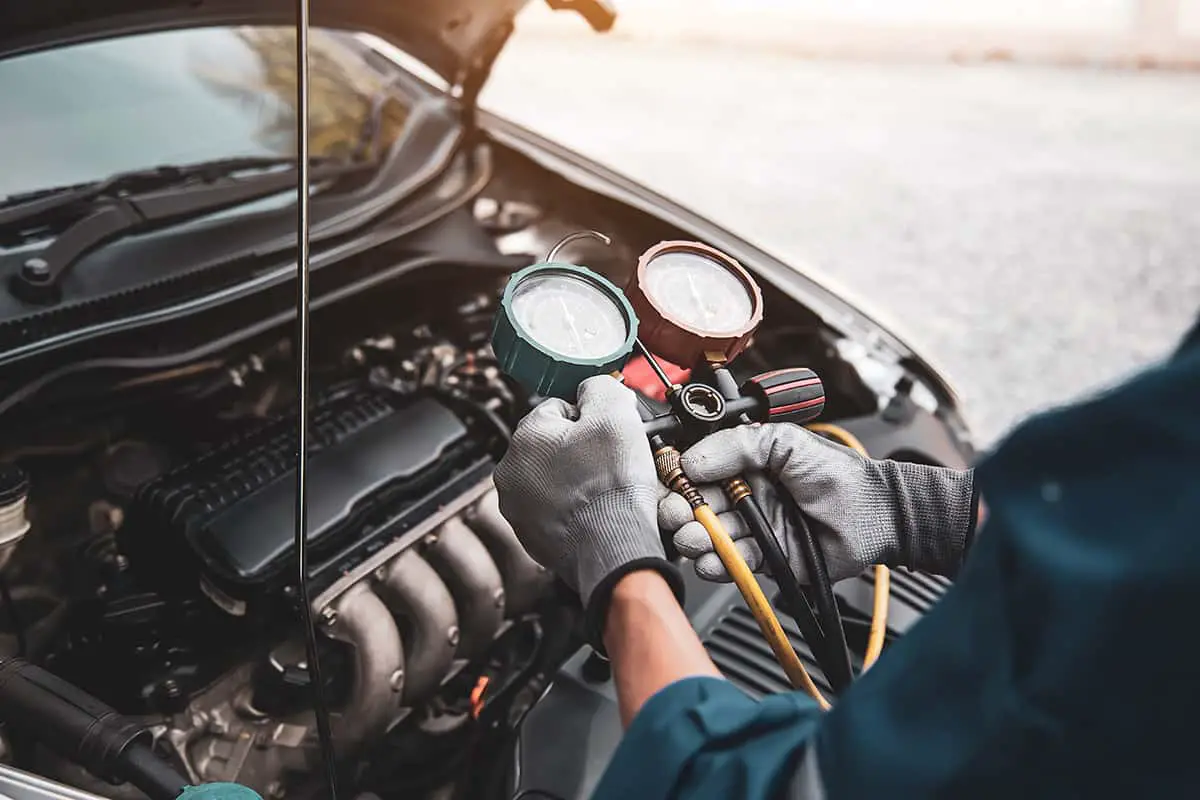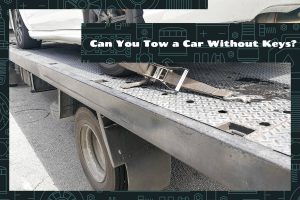The Ford F-150 is a reliable pickup truck, widely recognized for its ruggedness and versatility. It has a long-standing reputation for being one of the best vehicles in its class, known for its durability and ability to handle tough jobs. However, issues can arise, even with the most reliable of vehicles. One common issue that drivers may experience is a broken heater.
The following are possible causes of why your Ford F150’s heater isn’t working:
- Blown fuse
- Faulty blower motor
- Clogged heater core
- Low engine coolant level
- Faulty thermostat
- Faulty heater control valve
- Blown fuse
- Worn-out or damaged heater control cable
- Electrical wiring problems
- Faulty temperature control switch
For the remainder of this short guide, we’re going to take a close look at the different causes of why your F150’s heater isn’t working and what you can do to resolve the issue (if anything).
Ford F150 Heater Not Working—Causes and Solutions
1. Blown fuse
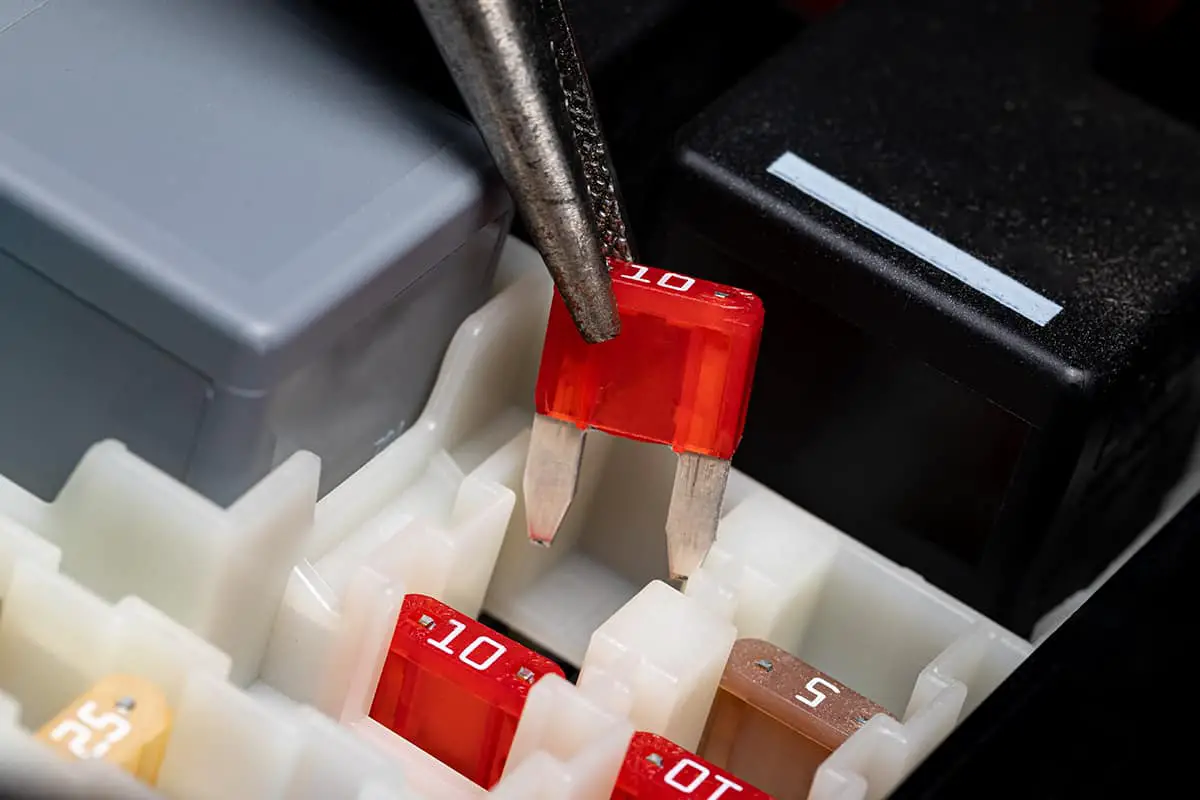
A fuse is a protective device for electrical systems and components that functions as a switch that closes when too much current flows through it. Fuse boxes are installed in vehicles and contain fuses that have been labeled and numbered for easy identification.
A blown fuse may be the cause of your Ford F150’s seemingly broken heater. When an excessive amount of electricity passes through a fuse, the fuse melts and the circuit is broken.
Solution: Replace the fuse
- Check the fuse box. Look under the hood of your F150 or under the driver’s-side dash.
- Identify the blown fuse. It may have melted poles or a cracked casing.
- Use pliers or a fuse puller to remove the blown fuse.
- Replace the old fuse with a new one. Make sure the replacement has the same amperage rating as the old one.
- Turn the car on and let it idle for 10 minutes before testing the heater.
2. Faulty blower motor
Your F150’s heater has a blower motor that is in charge of recirculating the heated air throughout the vehicle’s interior. The fan powered by the blower motor circulates heated air throughout the vehicle’s interior.
A blown fuse, a faulty relay, or a worn-out motor are all potential causes of a malfunctioning blower motor. The fan run efficiently or won’t turn at all if the blower motor is broken, thus making it impossible to heat up or cool down the cabin.
Solution: Replace the blower motor
- Locate the blower motor. It is typically located under the passenger side of the dash.
- Disconnect the wiring harness from the blower motor, remove the screws or bolts that hold the blower motor in place, and take out the old blower motor.
- Connect the wiring harness to the new blower motor, secure the new blower motor in place with the screws or bolts, and make sure it is properly aligned.
- Reconnect the battery.
- Turn the key to the “On” position and test out the heater.
3. Clogged heater core
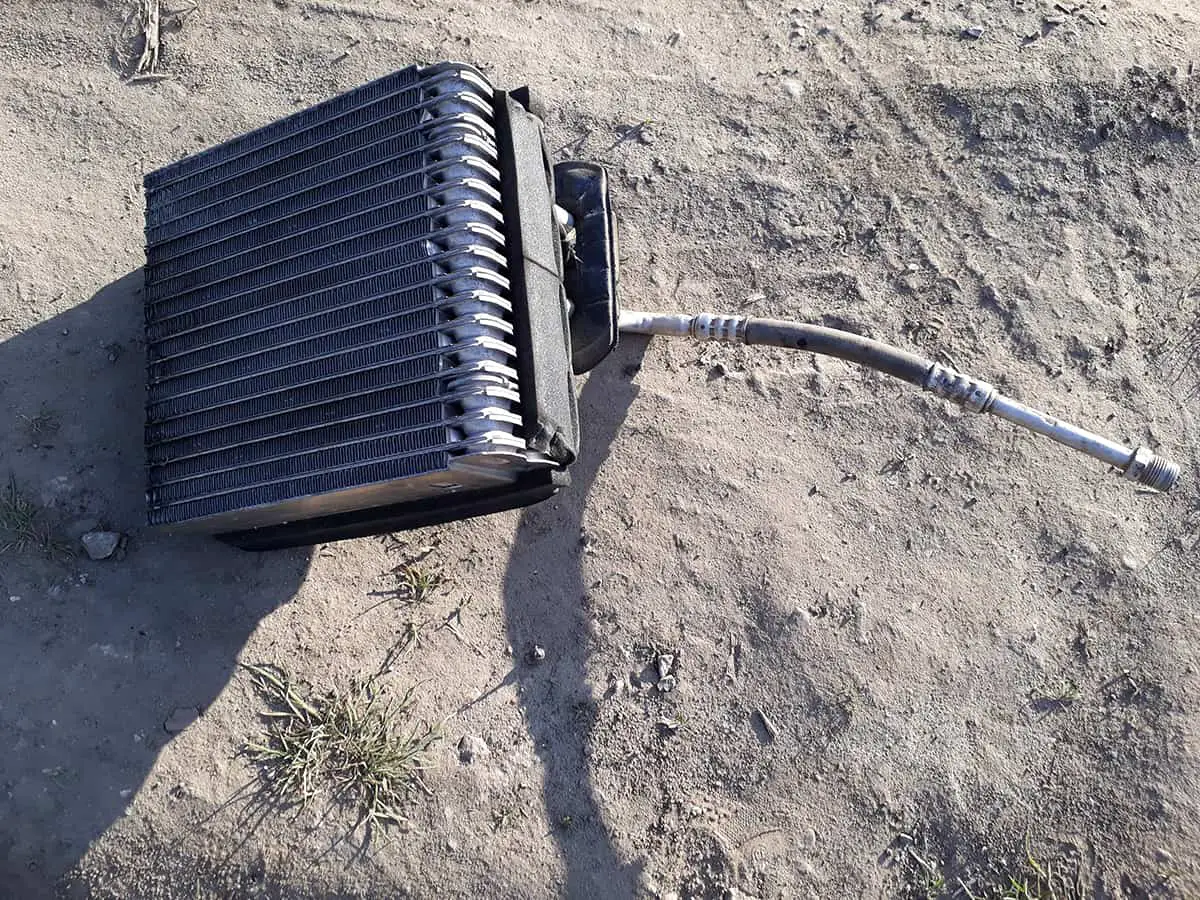
The heater core is an integral part of the Ford F150’s heating system and is what actually generates the heat inside the vehicle. The heater core, which is located under the dashboard, functions similarly to a miniature radiator.
Air blown into the cabin by the blower motor is heated by hot coolant from the engine, which flows through the heater core as the engine heats up. The air being blown into the cabin relies on the heater core to transfer heat from the engine coolant to the air.
Solution: Flush the heater core
- Locate the drain valve or petcock on the bottom of the radiator and open it to drain the coolant. Be sure to catch the coolant in a container for proper disposal.
- Locate the hoses that run from the engine to the heater core and disconnect them from the heater core.
- Use a garden hose to flush the heater core from both ends, making sure to remove any debris or buildup inside the core.
- Reattach the hoses to the heater core, making sure they are secure and properly aligned.
- Fill the radiator with fresh coolant and add any necessary additives.
- Start the engine and turn the heater on to full heat. Check for proper operation and make sure there are no leaks.
4. Low coolant level
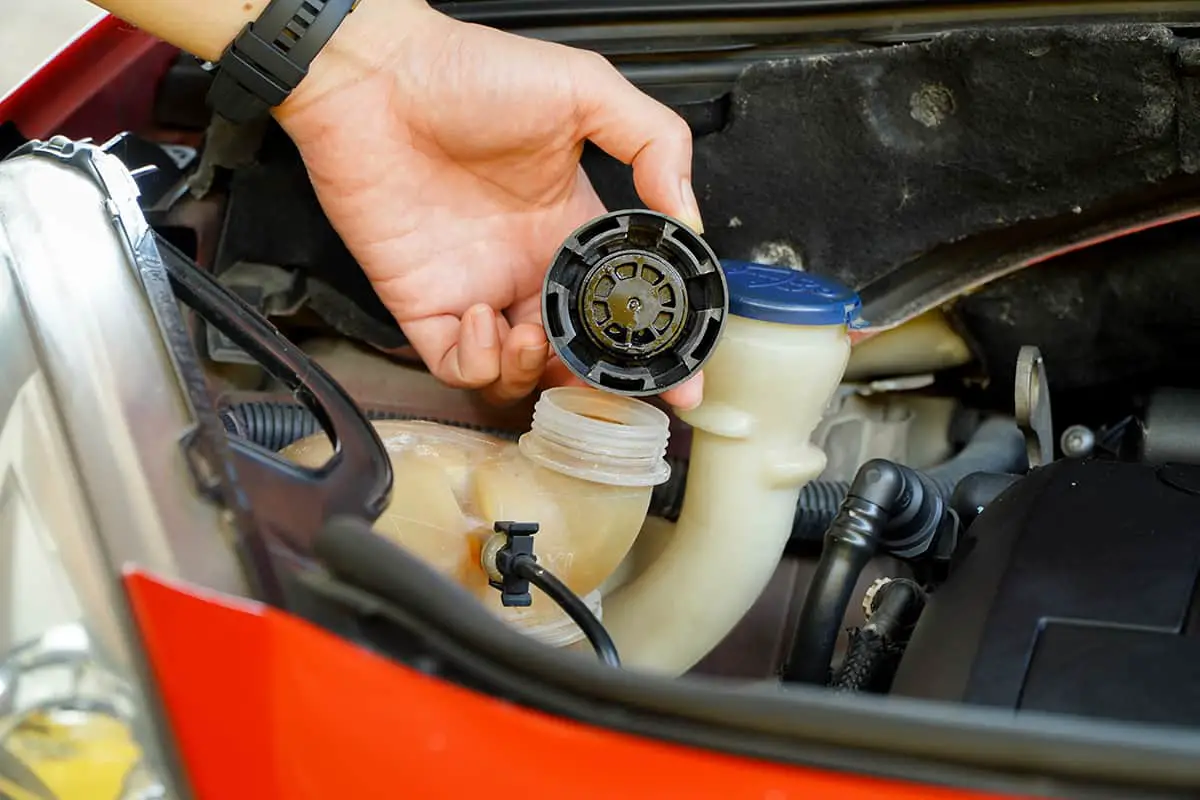
To keep your engine from overheating, you need to use coolant, which is a 50/50 mixture of water and antifreeze. Coolant doesn’t just keep the engine cool, but it also plays a pivotal role in heating up the cabin.
An under-filled coolant reservoir can reduce the effectiveness of your Ford F150’s heating system. This is due to the fact that the heater core circulates coolant, which transfers heat from the engine to the air blown into the cabin by the blower motor. There won’t be much, if any, heat coming from the engine to the cabin if the coolant level is low.
Solution: Top off the coolant
- Look for the coolant reservoir, which is typically located near the engine and is marked with the words “Coolant” or “Engine Coolant”.
- Remove the reservoir’s cap.
- Check the level of coolant in the reservoir and make sure it is between the “Min” and “Max” lines.
- Mix the coolant with distilled water in a 50/50 ratio.
- Slowly pour the coolant mixture into the coolant reservoir until it reaches the “Max” line.
- Shut the reservoir’s cap.
- Start the engine and let it run for a few minutes. Check for leaks around the coolant reservoir and hoses.
5. Faulty thermostat
The coolant flows into the engine and removes heat as the thermostat opens and closes. The thermostat closes when the engine reaches the set temperature, stopping the flow of coolant and keeping the engine at that temperature. This also aids in maintaining a steady temperature of the coolant being pumped through the heater core and into the cabin.
In addition to affecting the effectiveness of the heater, a broken thermostat in your Ford F-150 can prevent the engine from reaching the optimal operating temperature. If the thermostat is stuck open, for instance, the car’s engine may not get hot enough to generate enough heat for the cabin.
Solution: Replace the thermostat
- Look for the thermostat. It is typically located near the front of the engine, often on the housing of the lower radiator hose.
- Place a drain pan under the radiator and remove the radiator drain plug to drain the coolant into the pan.
- Locate the housing for the thermostat and remove any screws or bolts holding it in place. Then, remove the old thermostat and gasket.
- Place the new gasket and thermostat into the housing and secure it with the screws or bolts.
- Fill the radiator with the proper mixture of coolant and water, following the manufacturer’s specifications.
- Start the engine and let it run for a few minutes. Check for leaks around the thermostat housing and hoses.
6. Faulty heater control valve
Your Ford F-150’s heater is controlled by a heater control valve, which directs hot coolant from the engine to the heater core at the appropriate times. The valve opens and hot coolant flows into the heater core when the heater is activated. The valve that controls the flow of coolant shuts off when you shut off the heater.
Your Ford F150’s heater won’t work if hot coolant can’t reach the heater core due to a faulty heater control valve. This may occur if the valve becomes damaged or clogged or if it becomes stuck open or closed.
Solution: Replace the heater control valve
- Look for the heater control valve, which is located near the firewall and can be found by following the heater hoses from the engine to the heater core.
- Place a drain pan under the radiator and remove the radiator drain plug to drain the coolant into the pan.
- Locate the heater control valve and follow the heater hoses to the engine. Remove the clips or clamps holding the hoses in place and disconnect the hoses from the valve. Remove any screws or bolts holding the valve in place and remove the old valve.
- Connect the new valve to the hoses and secure them with the clips or clamps. Attach the valve to the firewall using the screws or bolts.
- Fill the radiator with the proper mixture of coolant and water, following the manufacturer’s specifications.
- Start the engine and let it run for a few minutes. Check for leaks around the heater control valve and hoses.
Safety Tips When Working with Car Heating/Cooling Systems
- Whenever you need to remove any component in your F150, remember to disconnect the car battery.
- Allow your vehicle’s engine to come back down to a cold temperature. You never want to disconnect hoses attached to the heating/cooling system when the engine is still hot since any liquids could burn you.
- Put on protective gear and prepare all the necessary tools, such as a socket set, pliers, paper towels or clean rags, replacement components, etc.
- Be aware of all moving parts as moving them in a direction they’re not intended can damage them, necessitating replacement.
- If you’re not handy around cars, don’t hesitate to take your Ford F150 to a professional mechanic. They can diagnose specific problems in your car that you can’t, and they’ll also have a good idea of how to fix the problem. Still, you should know the basics of car maintenance to, at the very least, avoid getting swindled—i.e., overcharged—over minor repairs.
